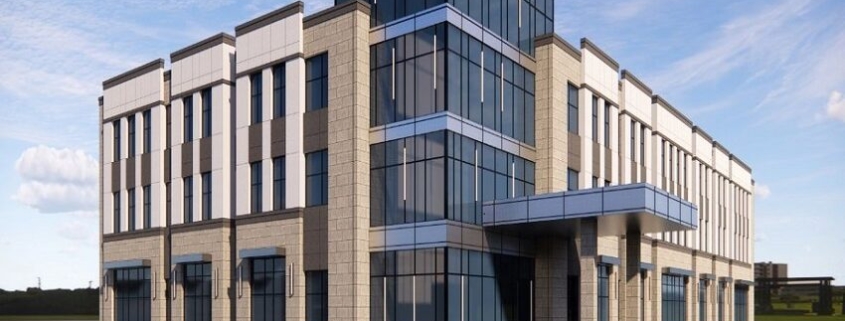The U.S. population is projected to grow by 22.5 million people, or just shy of 7%, between 2020 and 2030.
Remarkably, three-quarters of the population growth, or 17 million people, is in the 65 years or older cohort. Nearly 4 of 5 healthcare expenditure dollars is spent by this older group. With the aging population increasing from 17% of the U.S. population in 2020 to 21% of the U.S. population in 2030, medical encounters will be on a rapid rise.
 Forecasted growth in patient care volumes between 2020 and 2030, however, show divergent trends between inpatient and outpatient utilization. Inpatient admissions are expected to decline in absolute number from 34.9 million stays to 34.6 stays, or a drop of 0.9% in this 10-year period.
Forecasted growth in patient care volumes between 2020 and 2030, however, show divergent trends between inpatient and outpatient utilization. Inpatient admissions are expected to decline in absolute number from 34.9 million stays to 34.6 stays, or a drop of 0.9% in this 10-year period.
Outpatient care stands in sharp contrast with estimated growth of more than 20%, representing an added 540 million annual outpatient visits over the 10 year period. In 2030, outpatient encounters are expected to top more than 3.2 billion serving the expected U.S. population of 355 million individuals in 2030, or 9 visits per individual a year.
The trend towards outpatient care and away from hospital stays is a decades-long shift. Today, more than 50% of health system revenue comes from outpatient visits, a radical change from hospital-centric care to patient-centric care. In the past 20 years, inpatient admissions per 1,000 population dropped from 120 to 103, a reduction of 14%. During the same time, outpatient visits per capita grew 26%.
Advances in technology and medicine have enabled care to grow and thrive outside the acute care facility, a trend that has been accompanied by better healthcare outcomes, lower mortality and greater patient safety. Outpatient care has fueled the growth of medical office buildings, both on campus and in the community, supporting the shift to the “patient-centric” mode of healthcare delivery.
The pandemic in 2020 and 2021 put a spotlight on the jeopardy with delivery of U.S. outpatient care in an acute care setting. Thus, the healthcare crisis accelerated the trends in increased care in locations such as urgent care centers, ambulatory surgery centers and other outpatient medical buildings. At the same time, telehealth exploded in use during the pandemic given the obstacles to safe visits at the height of the crisis. Telehealth visits grew from 1% of outpatient encounters pre-pandemic to 12.5% at the peak in April 2020 to 6% today with widely varying utilization by medical specialties.
The aging and growing U.S. population and the overarching trend towards outpatient care is strongly supportive of increased demand for healthcare real estate and for the growing clinical intensity and value of medical office buildings of the future. Quality buildings occupied by major healthcare providers serving patients with greater and more acute services means durable, long-term occupancy with growth in revenue that can support the operating costs associated with occupancy. Medical real estate is expected to grow and perform in the same resilient manner in the future which will be positive for the owners of the properties.
Recent Activity – New Listing – Investment Sale
Central Illinois MOB Portfolio – 321,355 s.f. – Decatur and Peoria, IL
Closed – Debt Placement
Hoag Health Center – MOBs & Urgent Care – 159,235 s.f. – Irvine, CA
Closed – Debt Placement
114 Pacifica Court – 110,392 s.f. – Irvine, CA
Closed – Investment Sale
Brookfield Commons – 91,186 s.f. – Richmond, VA
Closed – Investment Sale
Omega Medical Center – 77,511 s.f. – Rockville, MD
Closed – Equity Placement
Thomas Park Investments – 55,608 s.f. – Haverhill, MA
Closed – Debt Placement
Oakwood Medical Park – 36,419 s.f. – Round Rock, TX
Closed – Investment Sale
Fertility Centers of Illinois – 30,264 s.f. – Glenview, IL
Source: HREI



 Forecasted growth in patient care volumes between 2020 and 2030, however, show divergent trends between inpatient and outpatient utilization. Inpatient admissions are expected to decline in absolute number from 34.9 million stays to 34.6 stays, or a drop of 0.9% in this 10-year period.
Forecasted growth in patient care volumes between 2020 and 2030, however, show divergent trends between inpatient and outpatient utilization. Inpatient admissions are expected to decline in absolute number from 34.9 million stays to 34.6 stays, or a drop of 0.9% in this 10-year period.
